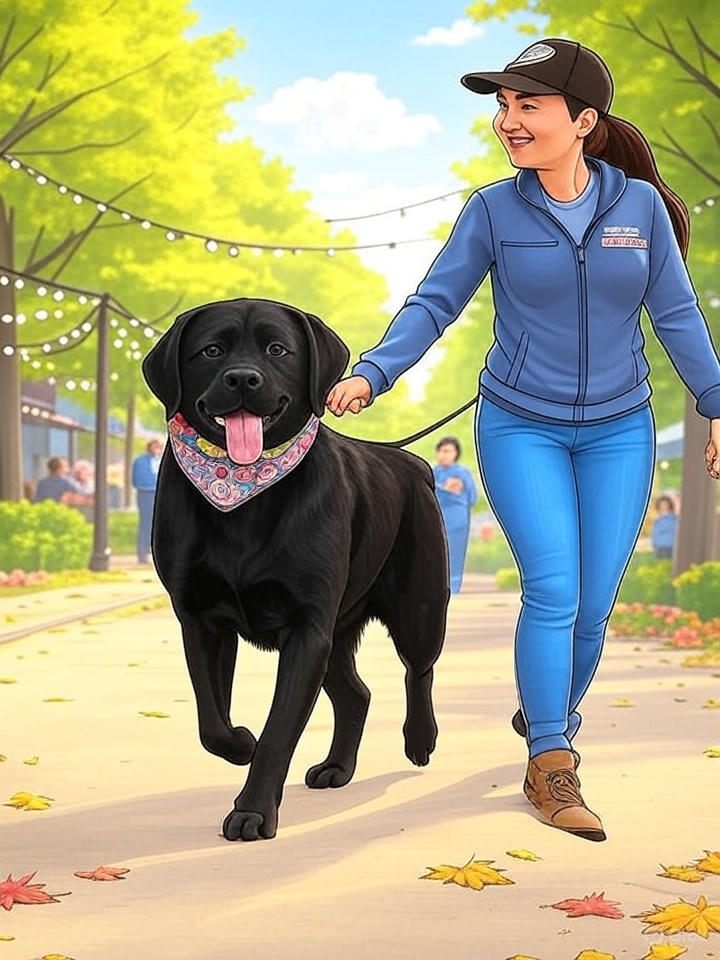Can Dogs Really Smell Fear? The Science Explained
Can dogs smell fear? This age-old question has sparked curiosity among pet owners, dog trainers, and scientists alike. The idea that dogs can detect human fear through their sense of smell is often portrayed in pop culture, but is there scientific evidence to back it up? In this article, we’ll explore the science behind whether dogs can smell fear, how their powerful noses work, and what role behavioral cues play. Let’s dive into the facts to uncover the truth about dogs and fear detection.
How Powerful Is a Dog’s Sense of Smell?
Dogs possess an incredible sense of smell, making them exceptional at detecting subtle changes in their environment. With 125–300 million olfactory receptors (compared to humans’ mere 5 million), a dog’s nose is 10,000 to 100,000 times more sensitive than ours (Horowitz, 2016). A significant portion of their brain is dedicated to processing scents, allowing them to pick up on chemical changes that humans can’t detect. This remarkable ability raises the question: Can dogs smell fear in humans?
When humans experience fear, their bodies release stress hormones like adrenaline and cortisol. These hormones can alter the chemical composition of sweat, breath, and other bodily secretions, potentially creating a distinct odor. A dog’s highly sensitive nose may be able to detect these chemical shifts, which could explain why dogs seem to “sense” fear.
Keywords: Dog sense of smell, canine olfactory system, dogs detecting fear, human stress hormones.
The Science of Fear and Odor
Fear triggers the body’s fight-or-flight response, releasing hormones like adrenaline that change the chemical makeup of sweat. Human sweat contains volatile organic compounds (VOCs), and research suggests that emotional states like fear can alter these compounds (Preti et al., 1987). A 2018 study in Animal Cognition found that dogs could differentiate between sweat samples collected from humans in fearful versus happy states. Dogs exposed to “fearful” sweat showed increased alertness or stress responses compared to “happy” sweat (D’Aniello et al., 2018). This suggests that dogs can indeed smell chemical changes linked to fear.
Another study in Scientific Reports (2020) explored whether dogs could detect stress-related odors in human breath. Trained dogs accurately identified stress-related breath samples, supporting the idea that dogs can sense fear through scent (Wilson et al., 2020). These findings highlight the potential for dogs to detect fear-related chemical changes, though the exact compounds involved are still being studied.
Keywords: Dogs smelling fear, human sweat chemistry, fear-related odors, canine scent detection.
Do Dogs Rely on Smell Alone?
While a dog’s sense of smell is extraordinary, their ability to detect fear likely goes beyond scent. Dogs are highly perceptive of human body language, facial expressions, and vocal tones. When someone is afraid, they may exhibit subtle cues like tense muscles, rapid breathing, or a shaky voice. A 2017 study in Scientific Reports showed that dogs respond differently to human facial expressions of fear versus happiness (Müller et al., 2017). These behavioral cues, combined with scent detection, create a fuller picture of a person’s emotional state.
For example, a fearful person might move hesitantly or avoid eye contact, which a dog can interpret as distress. This combination of olfactory and behavioral sensitivity makes dogs exceptionally good at “reading” fear, even if scent isn’t the only factor.
Keywords: Dogs reading body language, canine behavioral cues, dogs sensing human emotions, fear detection in dogs.
Real-World Examples: Dogs and Fear Detection
Anecdotal evidence supports the idea that dogs can sense fear. Police and military dogs are trained to detect suspicious behavior, often linked to fear-related cues. Similarly, service dogs for individuals with anxiety or PTSD are trained to respond to physiological signs of distress, such as increased heart rate or changes in breathing, which may be accompanied by scent changes. These examples show how dogs combine their sense of smell with observational skills to detect fear.
Keywords: Service dogs for anxiety, police dog training, dogs detecting distress, canine fear response.
Limitations in the Science
While research supports the idea that dogs can smell fear, there are limitations. Most studies are small-scale, and the specific chemical compounds dogs detect in fear-related odors are not fully identified. Factors like a dog’s breed, training, or temperament may also influence their ability to sense fear. Future research using advanced tools like gas chromatography-mass spectrometry could help pinpoint the exact VOCs associated with fear, providing clearer insights into how dogs detect it.
Keywords: Canine scent research, fear odor compounds, limitations in dog studies, future dog research.
Conclusion: Can Dogs Smell Fear?
So, can dogs really smell fear? The science says yes—dogs can likely detect fear through a combination of their powerful sense of smell and their ability to read human behavioral cues. Chemical changes in sweat and breath caused by fear-related hormones like adrenaline create odors that a dog’s sensitive nose can pick up. At the same time, dogs’ keen observation of body language and vocal tones enhances their ability to sense fear.
Whether it’s a service dog calming its owner or a pet seeming to “know” when you’re scared, dogs’ remarkable abilities make them uniquely attuned to human emotions. As research continues, we’ll likely uncover even more about how dogs use their noses to understand our feelings.
Keywords: Dogs smelling fear, canine emotional detection, dog behavior science, human-dog connection.
References
- D’Aniello, B., et al. (2018). Could dogs detect human emotions by smell? Animal Cognition, 21(4), 513–519.
- Horowitz, A. (2016). Being a Dog: Following the Dog Into a World of Smell. Scribner.
- Müller, C. A., et al. (2017). Dogs can discriminate emotional expressions of human faces. Scientific Reports, 7, 40675.
- Preti, G., et al. (1987). Volatile organic compounds in human sweat. Journal of Chemical Ecology, 13(4), 739–752.
- Wilson, C., et al. (2020). Dogs can discriminate between human baseline and psychological stress condition odours. Scientific Reports, 10, 17507.







